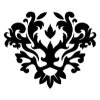One Way To Start A Story
When your story has a clear beginning, middle, and end, start it with the change.
Neon dragon in the year of the rabbit | Created by Jay W. Austin & DALL•E
Our brain will often stabilize what we (think we) notice by eliminating almost everything that could be noticed.
Next, it will find or create patterns in what we notice, often crafting cause-and-effect scenarios. Then — unless it’s hyper focused on a certain thing that is already moving — it will work to detect a change in that pattern.
It won’t always notice the change, but it’s prepared to notice it.
Your readers, viewers, and listeners have brains.
(Please notice that reminder to treat your audience as observers, thinkers, and storytellers in their own right, not exclusively as consumers.)
Their brains are as intrigued by change as yours. They’ve formed a storytelling pattern that you can delightfully surprise with the element of movement in a place they may not expect: the beginning.
Here’s a story about a dragon, expressed in two ways:
Version 1:
More than 3000 years ago, the dragon was born.
Version 2:
The dragon just missed being born in the year of the dragon.
Version 1 starts the story at the beginning of the story.
It’s not boring and it’s not wrong. Folklore often starts this way. It’s nostalgic and can make someone feel ties to something ancient. A sincerely beautiful experience.
I’m curious if your brain did what my brain did: it kinda just settled in to wait for the real story to begin, the equivalent of wrapping my blanket around me just a little tighter and moving my feet a little closer to the campfire.
The pattern here seems obvious: next we’ll talk about the dragon’s family, his environment, etc. We expect it, accept it, and know we need it.
Version 2 still starts at the beginning, but it leaves our brain without a clear pattern to follow. It bubbles over with subtle, meaningful hints of change.
In just one sentence, we’ve dropped into what could be a soft spot in the dragon’s story.
You may have other expectations now as your brain tries to figure out what comes next, but I’d guess the majority of readers aren’t expecting to now hear about the dragon’s family or environment like we were in the other version.
This version has us thinking less about the dragon’s surroundings and more about the dragon’s identity…
How did the dragon deal with being born in the year of the rabbit? Or maybe it was born in the year of the snake?
Wait, does the dragon even know its zodiac sign?
I feel this dragon already…why am I considered too Chinese here in the US but not Chinese enough back home? Is home where you’re born, where you’re from, where you feel you’re from, or where you dream of going?
I love this technique, and it’s easy to practice. I hope you practice too, regardless of your audience or the medium you’re using.
Where can you start with change?
Aye, I’m Jay. You’re on my personal site where I post things I make about interrupting mass incarceration, protecting migration, environmental justice & sustainability, language, communications, storytelling, creativity, and tech.
Learn about my ventures here, check out my non-profit initiative here, or explore my consultant services here.







